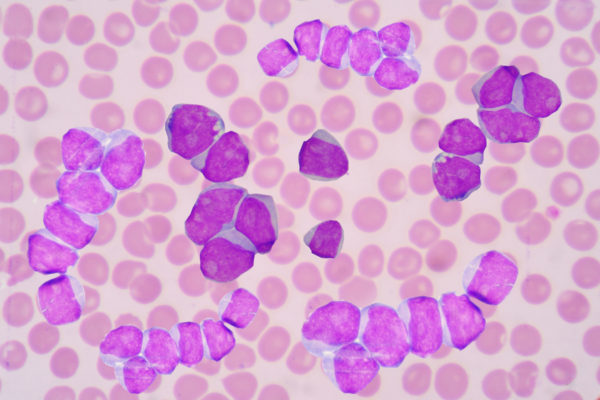
During the 2023 European Haematology Association (EHA) congress, the potential of tyrosine kinase inhibitor (TKI) dose reduction was discussed as a new approach to reduce the impact on quality of life and the financial burden associated with long-term TKI treatment in patients with chronic myeloid leukaemia.
Long-term treatment with tyrosine kinase inhibitors (TKIs) can significantly impact the quality of life of patients with chronic myeloid leukaemia (CML) due to TKI-related adverse events (AEs). Furthermore, extended TKI use also puts a financial burden on patients and society. In addition to TKI discontinuation, TKI dose reduction has emerged as a potential solution to address these challenges in clinical practice. The presented study aimed to evaluate the consequences of reducing TKI dose after achieving a major molecular response (MMR) during full-dose initial TKI treatment, and identify factors associated with loss of molecular responses in CML patients undergoing TKI dose reduction.
The initial therapy consisted of imatinib 400 mg QD, nilotinib 300 mg BID, or dasatinib 100 mg QD. After reaching a MMR, patients underwent a two-stage dose reduction: first to imatinib 300 mg QD, nilotinib 450 mg QD, or dasatinib 70 mg QD (Reduced Dose Stage 1, RDS1), and after at least 1-2 years of follow-up, to imatinib 200 mg QD, nilotinib 300 mg QD, or dasatinib 50 mg QD (RDS2). During follow-up, qPCR was performed every 3 months, while ddPCR was conducted at the time of dose reduction in patients with available samples.
Out of 1,702 patients with newly diagnosed chronic or accelerated phase CML, 837 patients were included in the study. Of these patients, 566 received full dose TKI and 271 undergoing dose reduction. Median follow-up was 47 months after dose reduction. Interestingly, a TKI dose reduction had no impact on achieving subsequent MR4 (4-year rates MR4 were 79% vs. 72% in the reduced-dose and full-dose cohorts, respectively; p=0.64) and MR4.5 (4-year MR4.5 rates were 54% vs. 47%; p=0.46). Additionally, it did not affect maintaining MMR (8-year sustained MMR rates were 97% vs. 98%; p=0.32), MR4 (7-year sustained MR4 rates were 89% vs. 94%; p=0.26), and MR4.5 (4-year sustained MR4.5 rates were 79% vs. 79%; p=0.32). Dose reduction therapy did not impair the treatment-free remission (TFR) success rate, with 2-year TFR rates of 57% in RDS1, 72% in RDS2, and 47% in those who received a full dose (p=0.30). Importantly, patients with longer MR4 duration had a higher TFR success. Older age (≥60 years), no deep molecular responses (DMR), shorter MR4 duration (< 22 months), higher white blood cells (WBC≥42 x 109/L) count, lower haemoglobin concentration (<100g/L), and/or EUTOS long-term survival score (ELTs) intermediate/high-risk correlated with loss of MMR, MR4 and/or MR4.5. Before dose reduction, 86% of patients experienced AEs. Of those, 74% improved AEs after dose reduction. Of note, ddPCR was found to be better than qRT-PCR in predicting the consequences of TKI-dose reduction.
In conclusion, TKI dose reduction after achieving MMR does not adversely affect subsequent therapy responses in patients with CML. Diverse factors, including older age or shorter MR4 duration, were found to correlate with loss of MMR, MR4 and/or MR4.5 after TKI dose reduction.
Reference
Jiang Q. Efficacy of low-dose tyrosine kinase inhibitor therapy after achieving major molecular response in persons with chronic myeloid leukaemia. Presented at EHA 2023; Presentation ID S158.